10 style tips to capture 70s-inspired interior design trends
Interior designers and stylists share how to embrace the 70s home decor trends in style for 2023
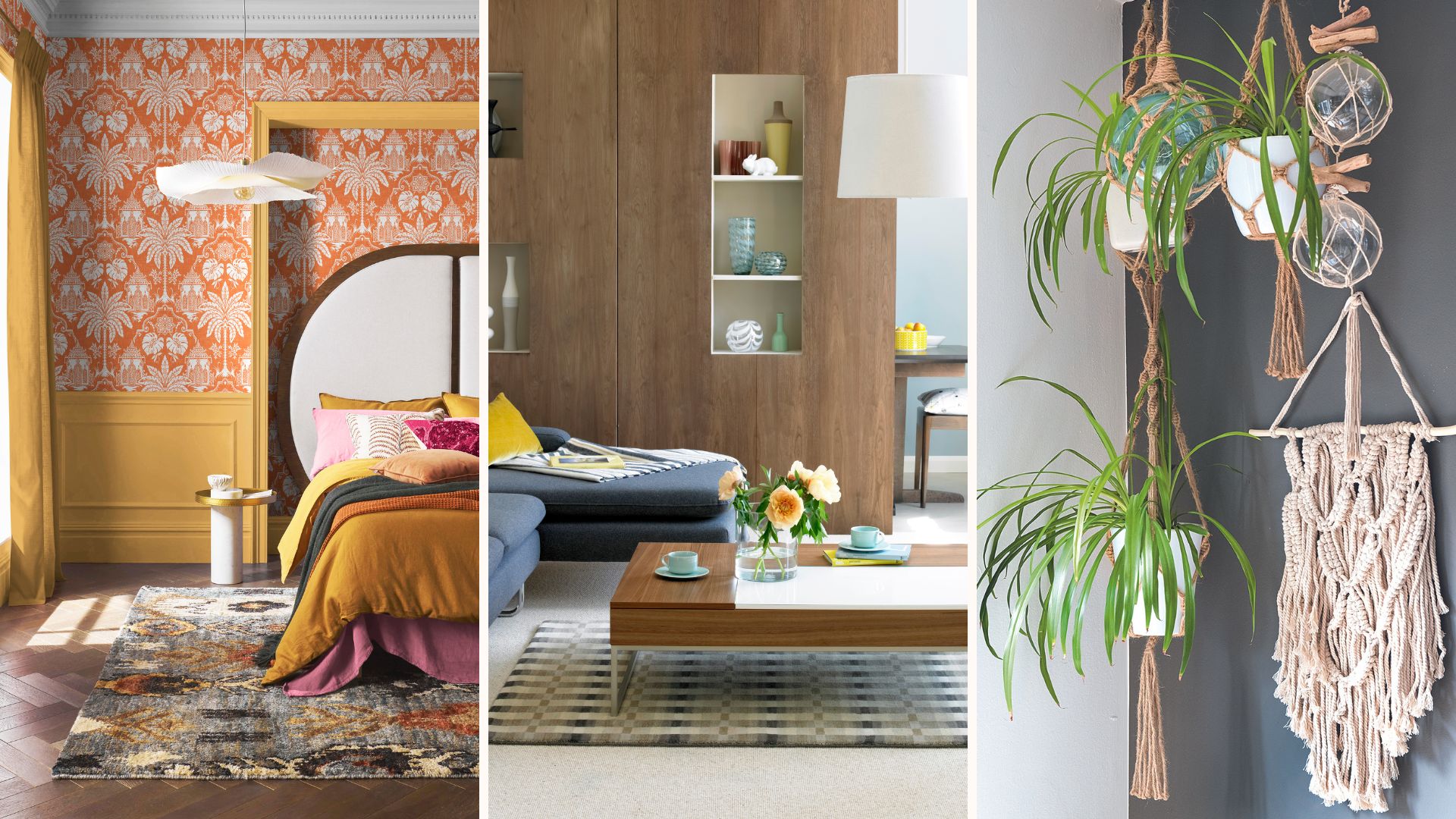

There's a retro revival happening in the world of trends right now. We are of course talking about the massive resurgence of 70s-inspired interior design and fashion trends, partly, thanks to stylized TV shows like Daisy & The Six.
Showing how this era’s aesthetic is one of the key interior design trends of 2023 searches for 70s-inspired interior design trends have increased 150% and the hashtags #70sdecor and #70sinterior have amassed 35.8m and 2.8m views on TikTok to date.
But why is this look proving so popular now, unlike so many outdated interior design trends that haven't stood the test of time? James Greenwood, an interior expert at Graham and Brown, believes the 70s home decor trend is a reaction against the previous years of bland, neutral styles.
“As we’ve lived through a decade of gray interiors that are only just warming up to neutral, people are craving color and design. As with all great trends they always have their time to shine, think about the art deco, and arts and crafts revivals, it’s time for the 70s to shine again.” Here's how to adopt the 70s-inspired interior design for modern-day decor.
10 ways to incorporate 70s home decor trends into your home
"The 1970s is a warm, rich period that exudes comfort,” says Peter Spalding, co-founder of Daniel House Club." But how can you recreate the retro look at home with a modern twist? Interior design experts share their top tips...
1. Seek natural materials
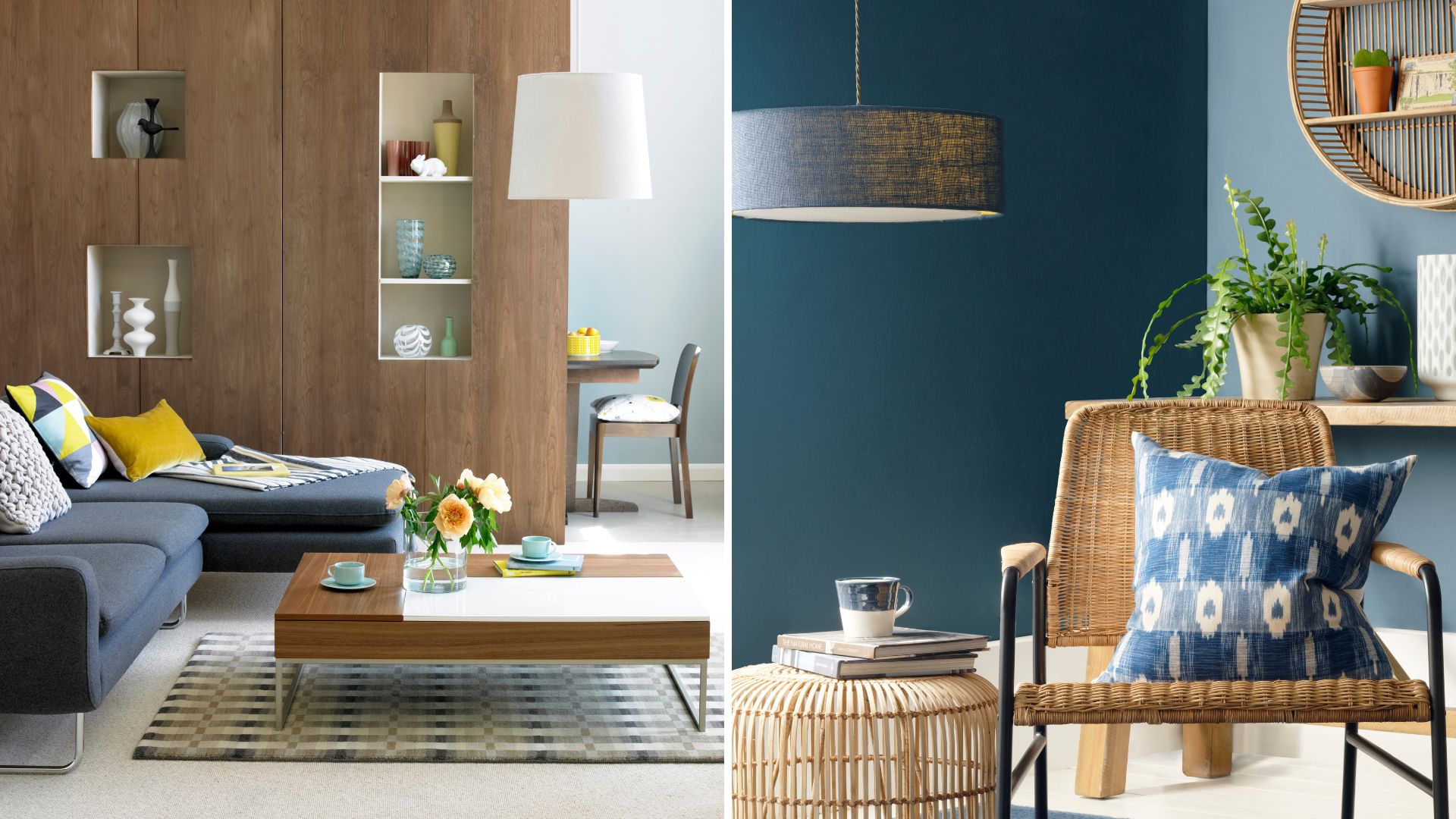
70s interiors are often characterized by the use of natural materials such as rattan, wicker, wood, and macrame. The latter is an easy way to get on board with this trend at home and searches for ‘macrame’ have doubled to 200% in the past year as many welcome it as a new hobby to try.
“Incorporating rattan or wicker pieces soften the crispness of a new house. They bring light textures and light earth tones to space. Combine this with bold color schemes, vintage appliances, and macrame hangings in the bathroom or using natural materials like wooden vanities,” says Ana Maria Torres, founder of At Architects.
“Rattan can be used for formal dining cantilever chairs or as outdoor seating to enjoy the sunshine in the garden.”
Sign up for the woman&home newsletter
Sign up to our free daily email for the latest royal and entertainment news, interesting opinion, expert advice on styling and beauty trends, and no-nonsense guides to the health and wellness questions you want answered.
If you don’t want to go as the 70s with rattan and macrame, natural wood offers more of a nod to the period. “Consider wooden cabinets and butcher-block countertops made of natural wood,” suggests Melony Huber, co-founder of La Peony.
2. Set the tone with earthy colors
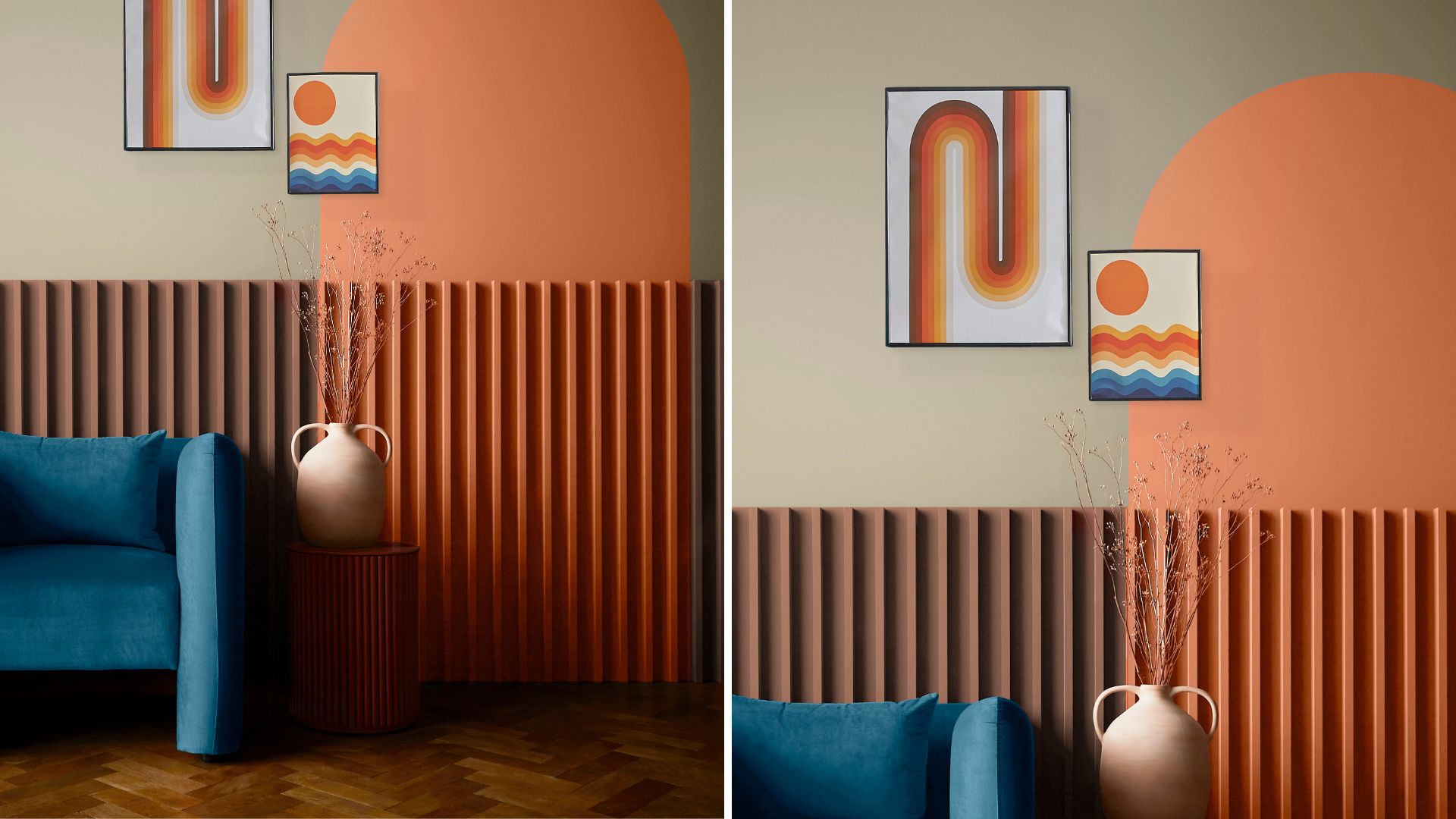
If there’s one thing that people associate with 70s decor, it’s the color trend orange. This revival of the aesthetic sees bright oranges replaced with slightly subtler shades, often with a wholesome, brown tint.
“Warm terracotta, rust oranges, reds, and chocolate browns are popular picks, creating cozy and welcoming interiors, combined with tactile textures. Comfort and warmth are the driving goals,” says Ana Maria.
But orange wasn’t the only color about in the 70s – cool greens and (shudder!) avocado are also important parts of this era’s palette.
“Green was a key color in the 70s, and in many different shades. Be it dark, mossy green, or a lighter, avocado green, green signified nature and in the 70s, the movement to refocus on the environment,” says Ashley Banbury, interior designer at Dutch Boy Paints.” It's no wonder both forest green and sage green are hugely popular for homes in 2023.
“Bring in warm, earthy colors. Pair warm shades of red, orange, yellow, and brown with cool greens, creating a temperature balance of warm and cool tones.”
3. Incorporate curvaceous furniture
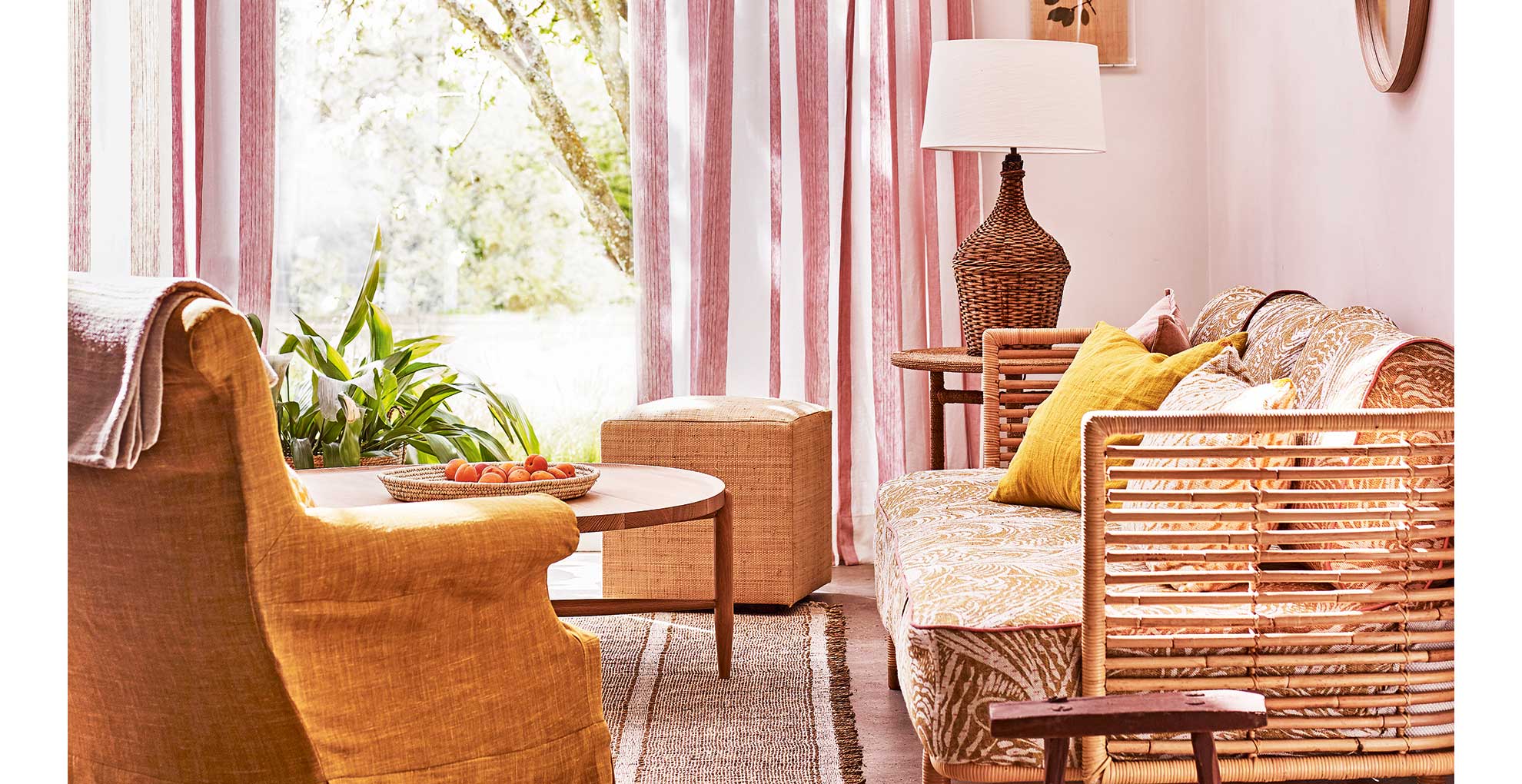
Smooth curvy furniture, often in dark wood is a real feature of 70s decor and an easy way to bring the trend into your home. It's worth noting that soft curves are also a key bedroom trend for 2023.
“Look for curvaceous furniture with soft, organic, shapes, and strong, geometric decorative accents to add balance to the space,” says Ashley.
“Curved features and wavy decor pieces create the 70s feel and add visual comfort and softness throughout the home. Soft, curvy furniture can get away with being in a more vibrant, statement color, as the shape balances out the qualities of the color.”
4. Choose velvet and boucle furnishings
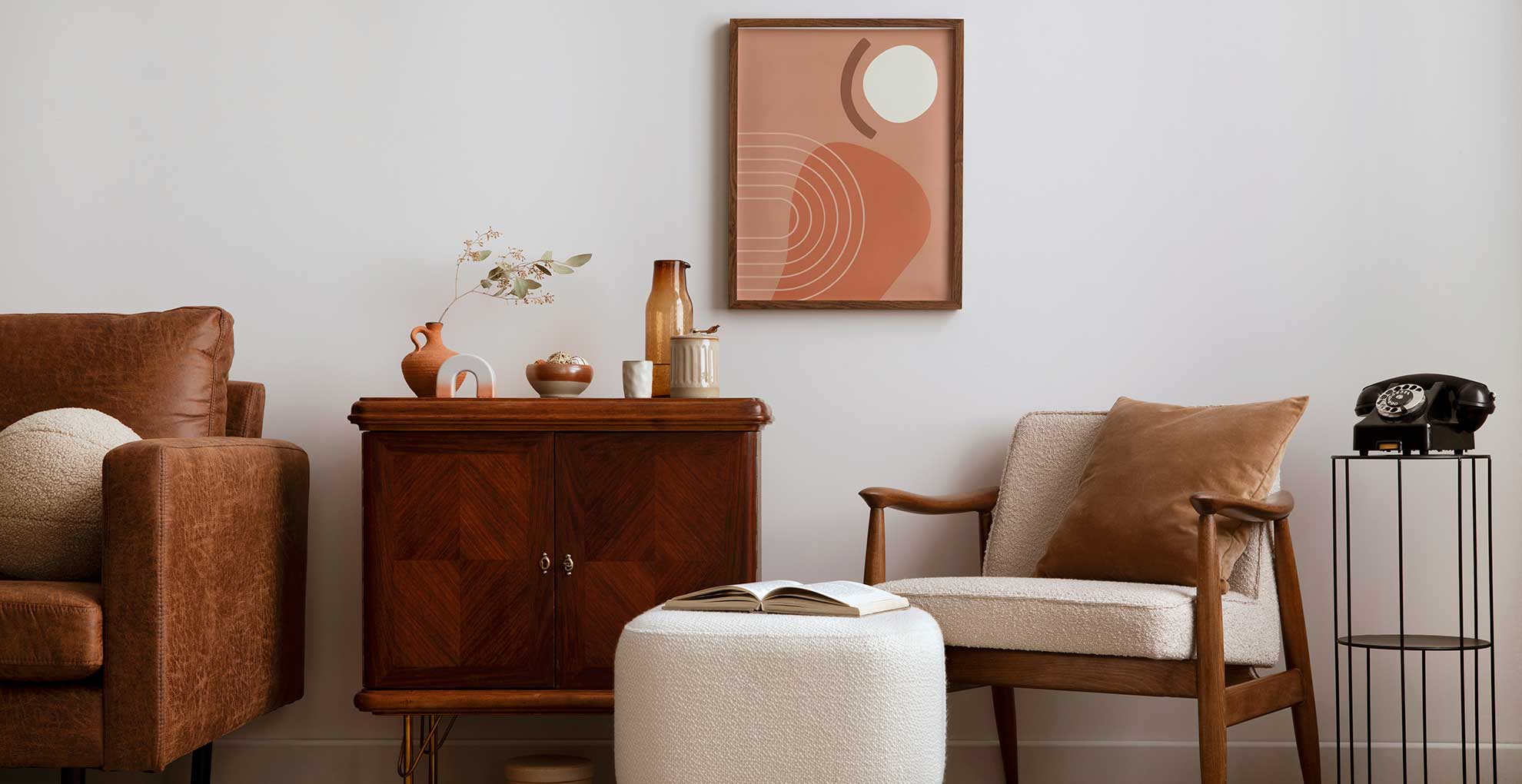
Velvet was a key fabric in the 70s in both fashion and interiors, with the standout piece of furniture being a velvet armchair or curved sofa. As a result of the retro revival, boucle couches are one of the biggest living room trends in 2023.
“One might obtain a low-lying curved sofa sectional, upholstered in a warm rich colored velvet with numerous throw pillows with bold patterns,” says Lynette Willett, senior interior designer at Est Est Interior Design.
Boucle is also having a moment, with a 100% Pinterest search increase. “Boucle is a great fabric for upholstering an array of furniture, which is a skill that we are seeing homeowners practice more and more as they look to upcycle vintage pieces,” says Marie Goodwin of Prestigious Textiles.
“Where we have previously seen a beige and greige color palette used with boucle, we expect to see more calming and earthy 70s-esque shades coming through such as moss green and honeycomb for natural interiors as we head towards summer.”
5. Introduce retro prints
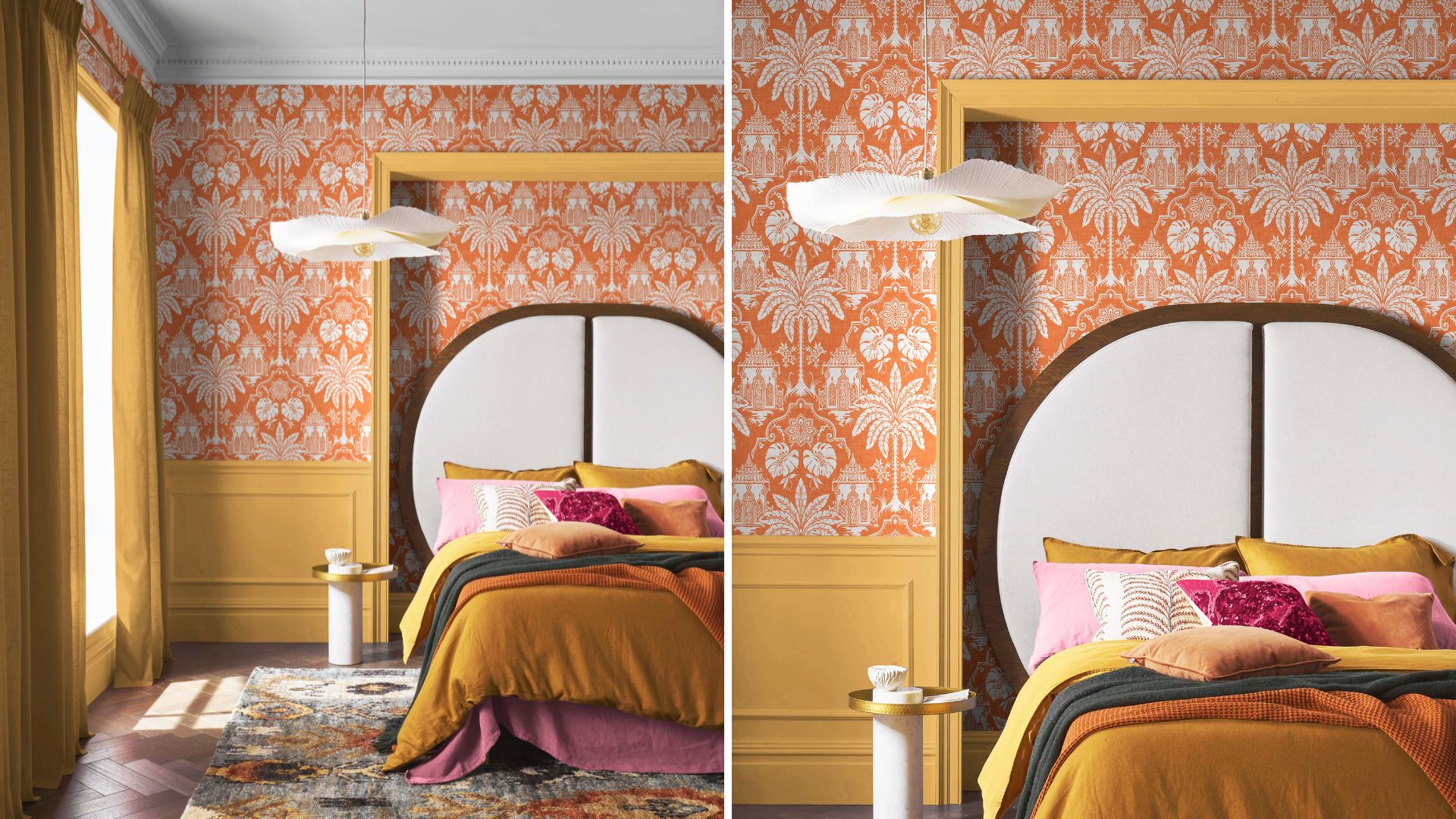
Imperial Orange wallpaper; Turmeric Interior Eggshell Paint, both Graham & Brown
It’s hard to think about 70s interiors without remembering the large florals or geometric prints which featured in wallpaper trends and fabrics during this period.
Adding these classic 70s patterns is an easy way to achieve the decade’s look, but, instead of going for a floor-to-ceiling statement style, you could try something more subtle like a 70s-inspired feature wall or updating your bedding with bold, bright patterns.
“Integrate 70s style seamlessly into your home by adding retro-inspired pieces such as statement furniture, vibrant patterns, or vintage-inspired elements reminiscent of this decade. Keep the aesthetic clean and modern - pairing old with new elements creates a style that's both classic and trend-conscious," says Melony.
But James cautions about going over the top. “Color and texture are key to executing this trend, don’t get flower power stuck into your head, there are many ways to emulate this trend in the home.”
"Take a bold approach to your use of pattern," suggests Louisa Tratalos, founder of Colours of Arley. "Stripes can be used alongside swirling shapes, soft geometrics, and retro florals to create a playful look that has stepped straight out of the seventies. Bring the look up to date for 2023 by combining it with mid-century furniture or Scandi decor."
6. Rely on layering
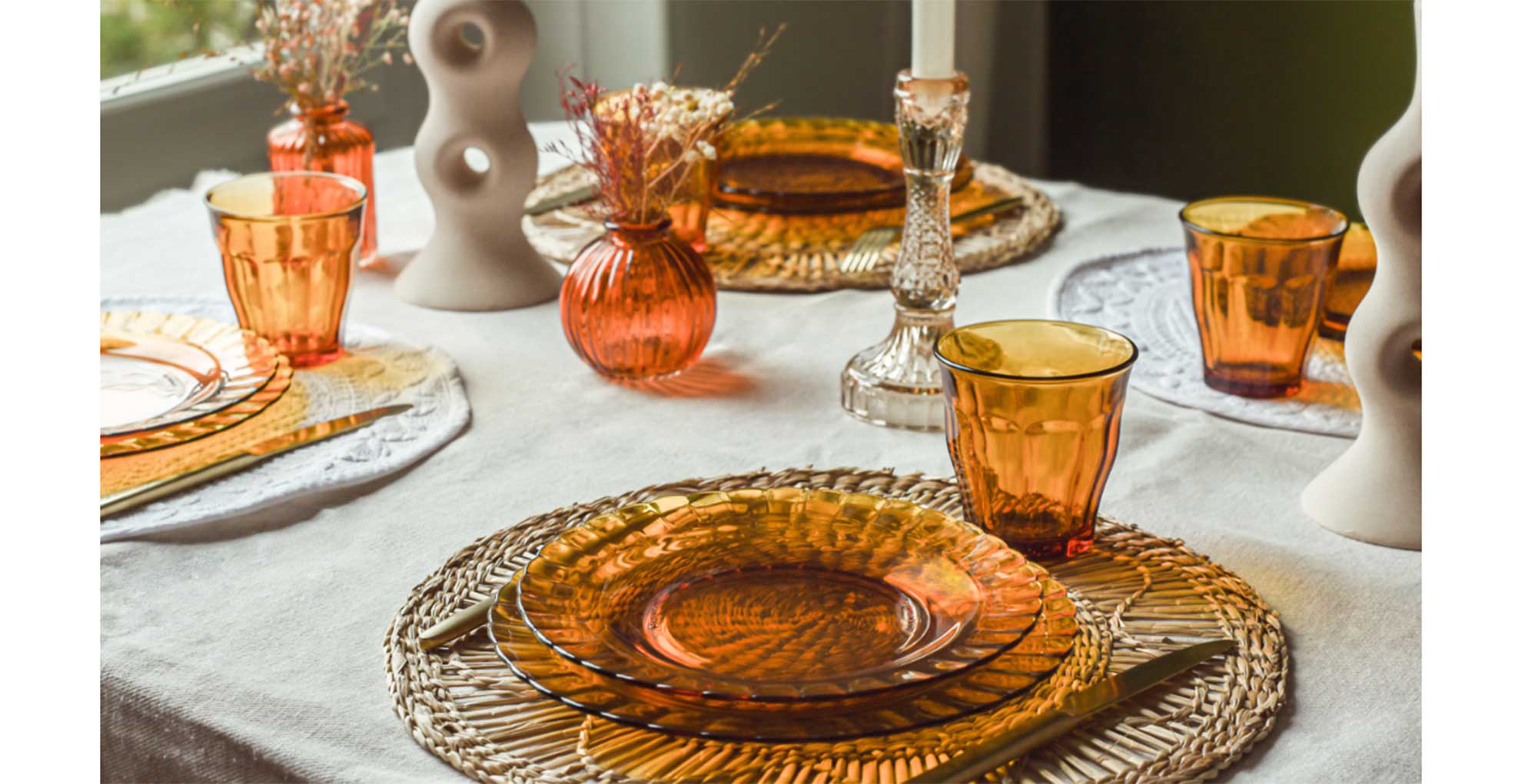
Another important element in this decade’s decor was layering – whether with several different fabrics or the type of furniture, you put in a room.
“Mixing in a few strong elements with some softer ones can make a lot of impact," says Lynette. "An impactful retro chandelier, a plush rug, or psychedelic or animal print patterns on pillows on the low-lying sofa can go a long way.
“Incorporating warm colors into your scheme and making conscious choices around your textiles, [for example] boucle and corduroy textures can help bring this look subtly in your home,” says James.
Layering orange-hued glassware, relaxed linens, and rattan accessories is a masterclass by Duralex in styling the look for kitchens and dining areas
7. Add iconic botanicals
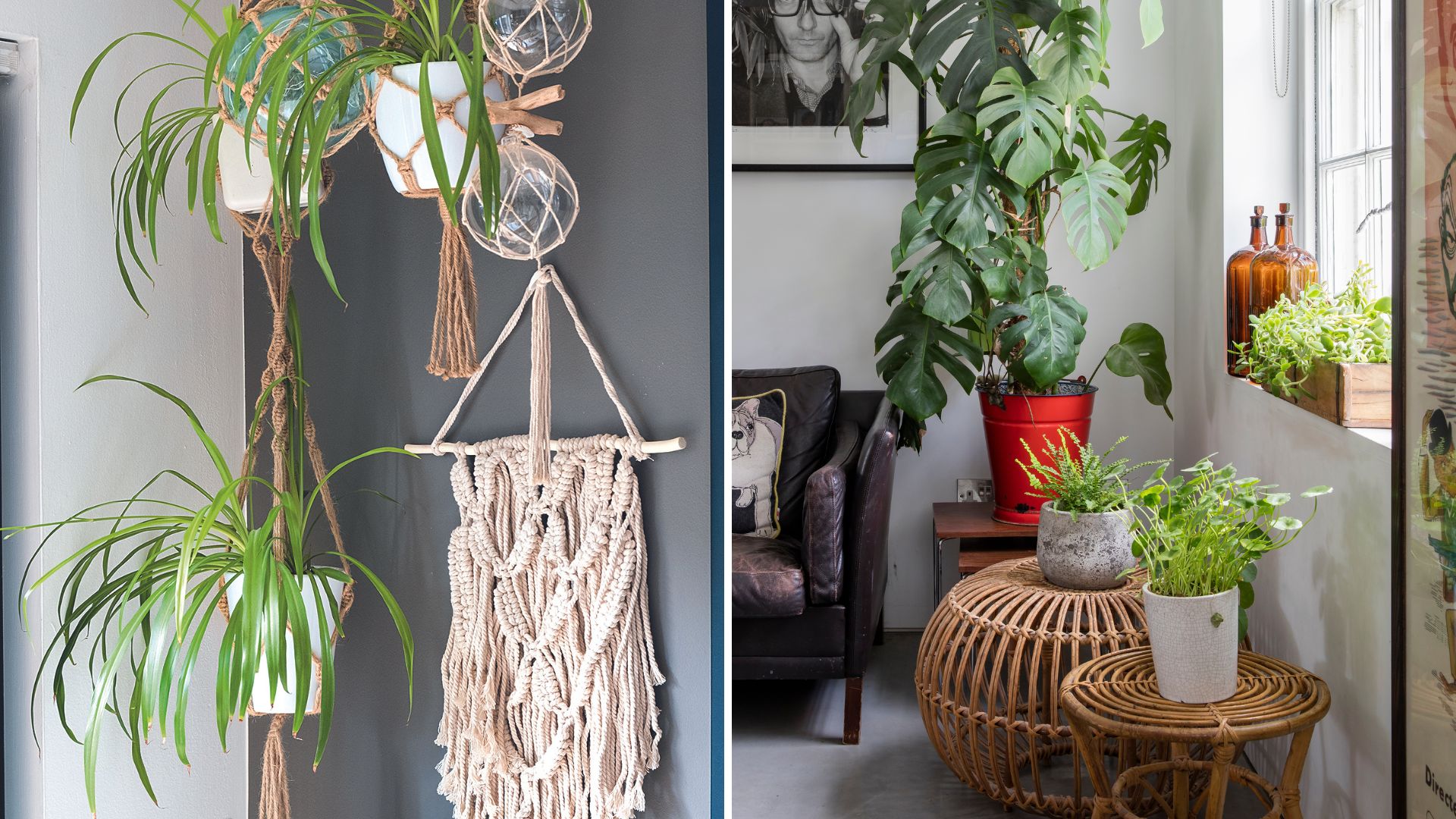
Florals and greenery were a big trend in the 70s, not just as patterns or prints on wallpaper and fabrics but in real life too. Add icon monstera plants, spider plants, ferns, and snake plants to your decor if you want a return to the 70s vibe.
“We are seeing a rise in decor that brings elements of the outdoors into the home for biophilic benefits,” says Ashley. Adding the best plants that resonate with the era can go a long way to channeling the look without even having to redecorate.
8. Replicate a sunken living room
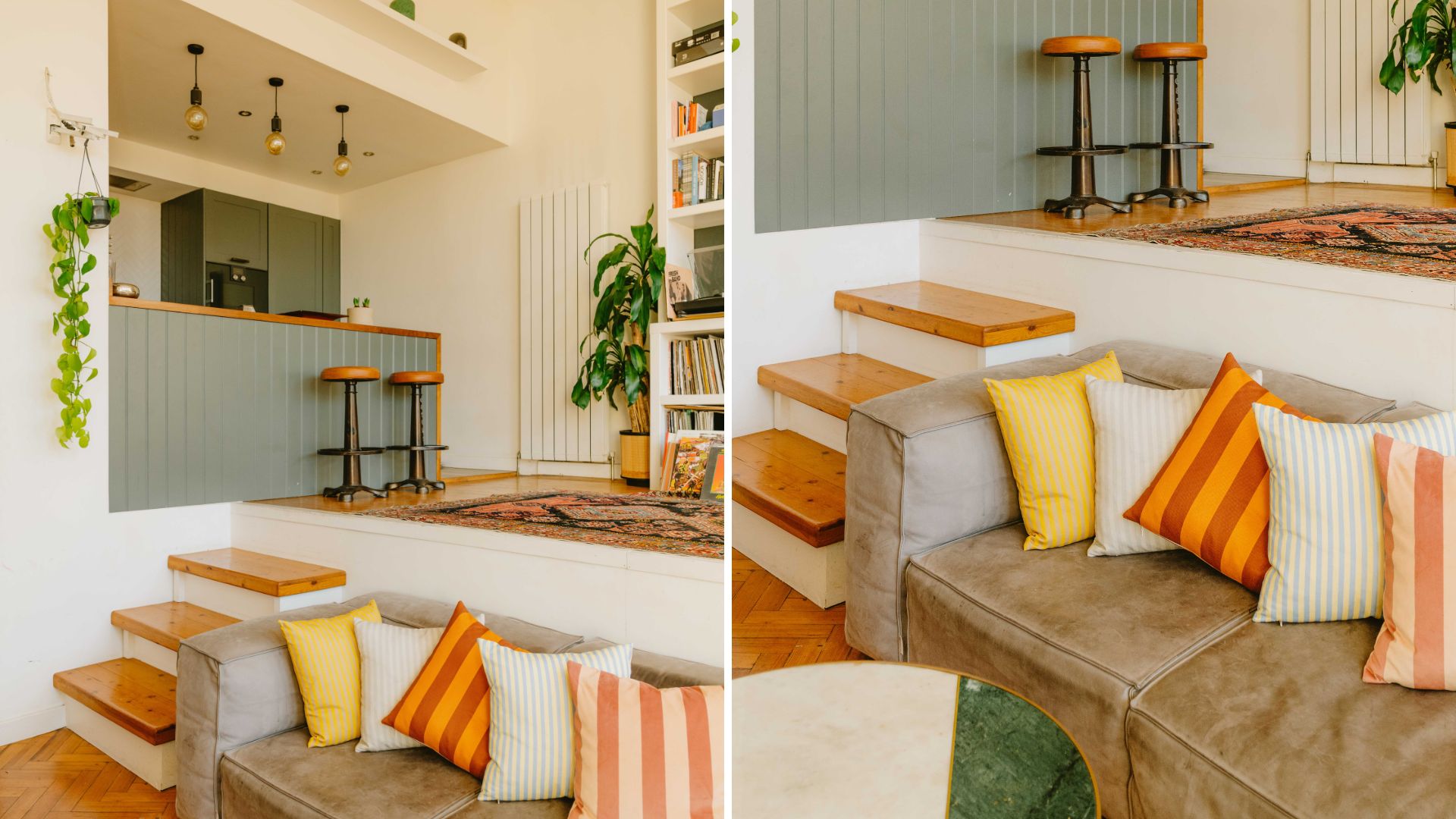
When you think of 70s interiors, one of the key images that springs to mind is that of the sunken living room. Traditionally, this was a lower-lying ‘pit area’ in the lounge, something that’s not very easy to achieve without a lot of building work and money, but there are simple things that you can do to achieve this aesthetic for the modern home.
“[Try] lower-lying furniture in warm wood, plastics, wicker or rattan, shiny metal, and leather,” suggests Lynette. “Creating social comfort was the emphasis, so plush lounge-type pieces that have low lines, such as a sectional as well as coupling groups of club chairs with textural fabrics, including a large coffee table. Bringing in curvy lines with patterned fabrics would add a little groove to the styling.”
“Anything you can do to create a pit-like feel will go a long way. Facing a chimney in rugged stone or covering a ceiling in raw wood would reinforce the mood,” says Peter. “A sofa that’s low-slung, maybe a little curvaceous, and ideally defining the perimeter of a conversation pit.”
9. Consider hanging chairs
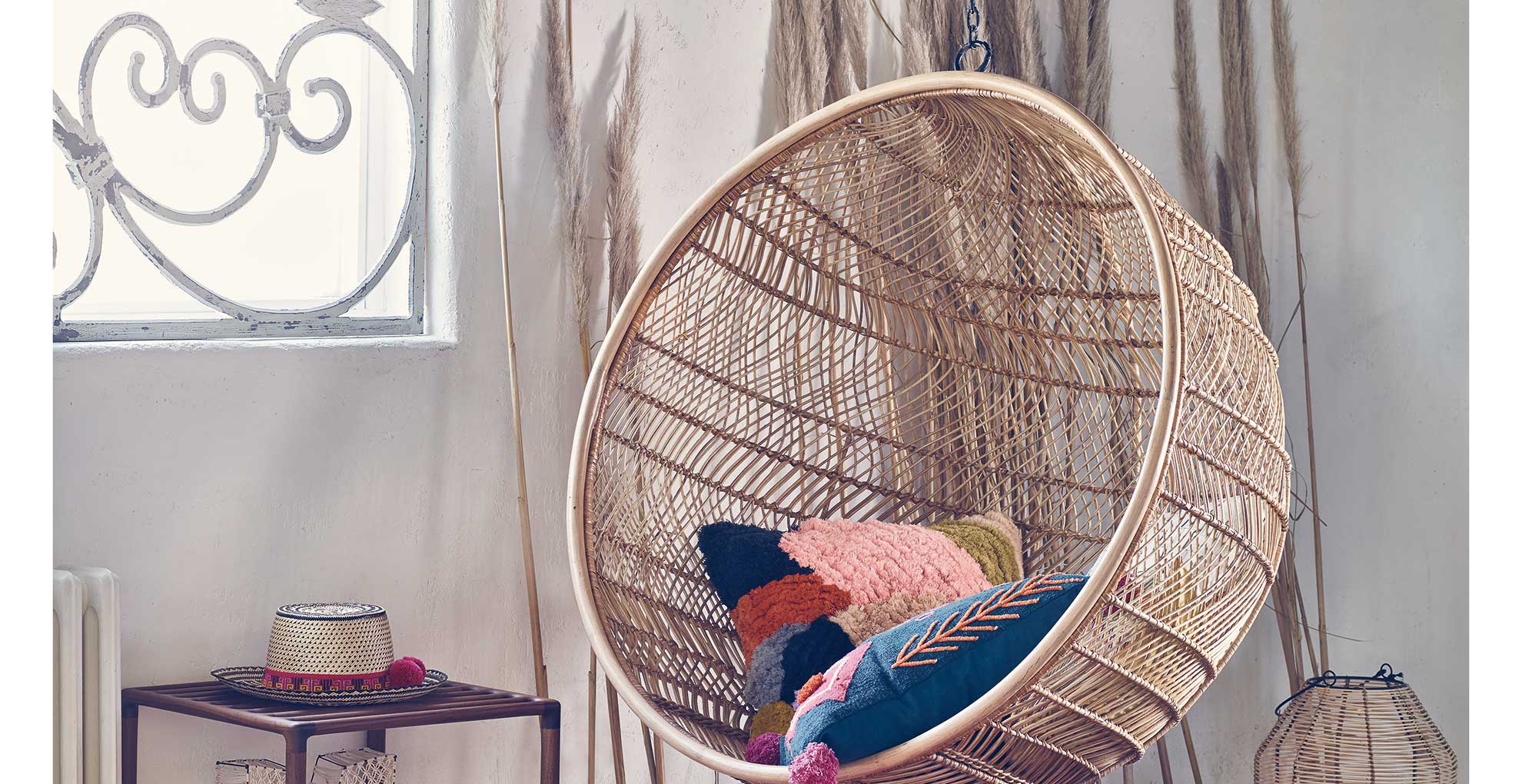
Hanging chairs were another furniture staple of the 70s and are having a bit of a comeback. Rattan egg chairs are regular features in gardens as one of the best outdoor furniture pieces, and now they’re coming inside as part of this retro trend.
“They are fun, create a relaxed vibe, and are a trendy statement to any space. Bonus: they are so comfortable and the perfect place to cozy up and relax or read a book,” says Melony.
Because not every home is suitable for a suspended chair you can still get the look with a grounded woven chair, that offers the same level of comfort without the sensation of floating.
10. Welcome room dividers
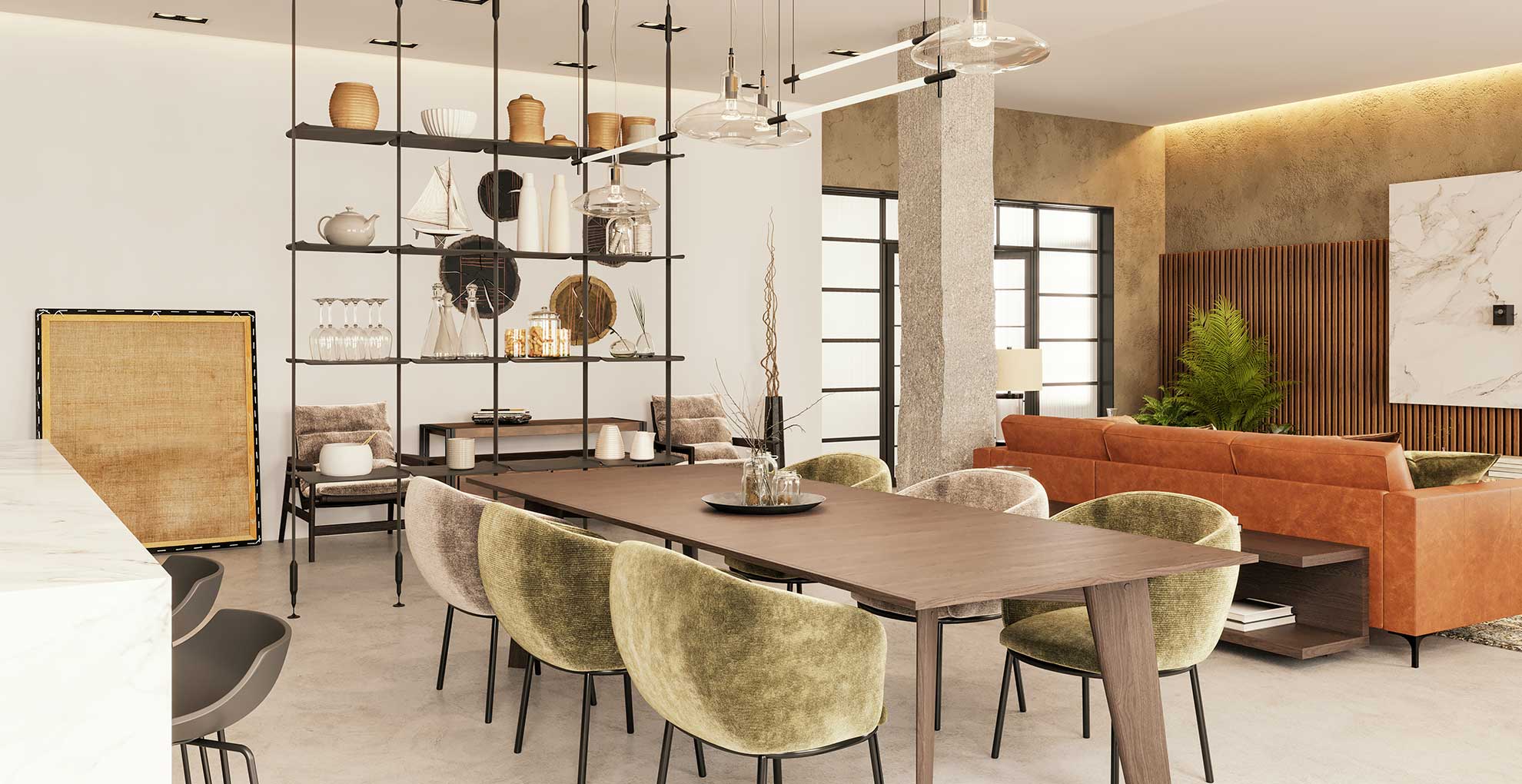
Just like today's modern home, the 70s house layout was characterized by open-plan living so sectioning off different parts of a room was a popular practice.
“Open floor plans of the ‘70s popularized the use of folding room dividers and privacy screens; a trend we are starting to see come back into the home today, as we are seeking more privacy in our open floor plans,” says Ashley.
“If you have an open floor plan and are looking to add the 70s feel, evaluate if you have a space suitable for a bit of separation that could also use a pop color and upcycle a vintage or second-hand room divider by painting it in 70s inspired hue.”
What interior design style was big in the 70s?
In general, the 70s were about the big, bold and beautiful and recreating the look for the modern day involves taking elements from the past and updating them.
“Interior trends from the seventies are known for embracing color, texture, patterns, and biophilic accents. Seventies interior design heavily layered color and used it as a tool to balance out, complement, and contrast other design elements in the home,” says Ashley.
“The 70s created a shift in home design trends, styles became more personal and individualistic. It became about layering textures, color and pattern, adding curved design details to break away from the streamline look of the past mid-century eras.”

Charlotte Duck is an award-winning journalist who writes who regularly writes for Tatler, the Evening Standard, Yahoo Finance, and Virgin Money. She loves anything to do with property and has written about everything from homes with their own helicopter pad to transforming a room on a £99 budget.
-
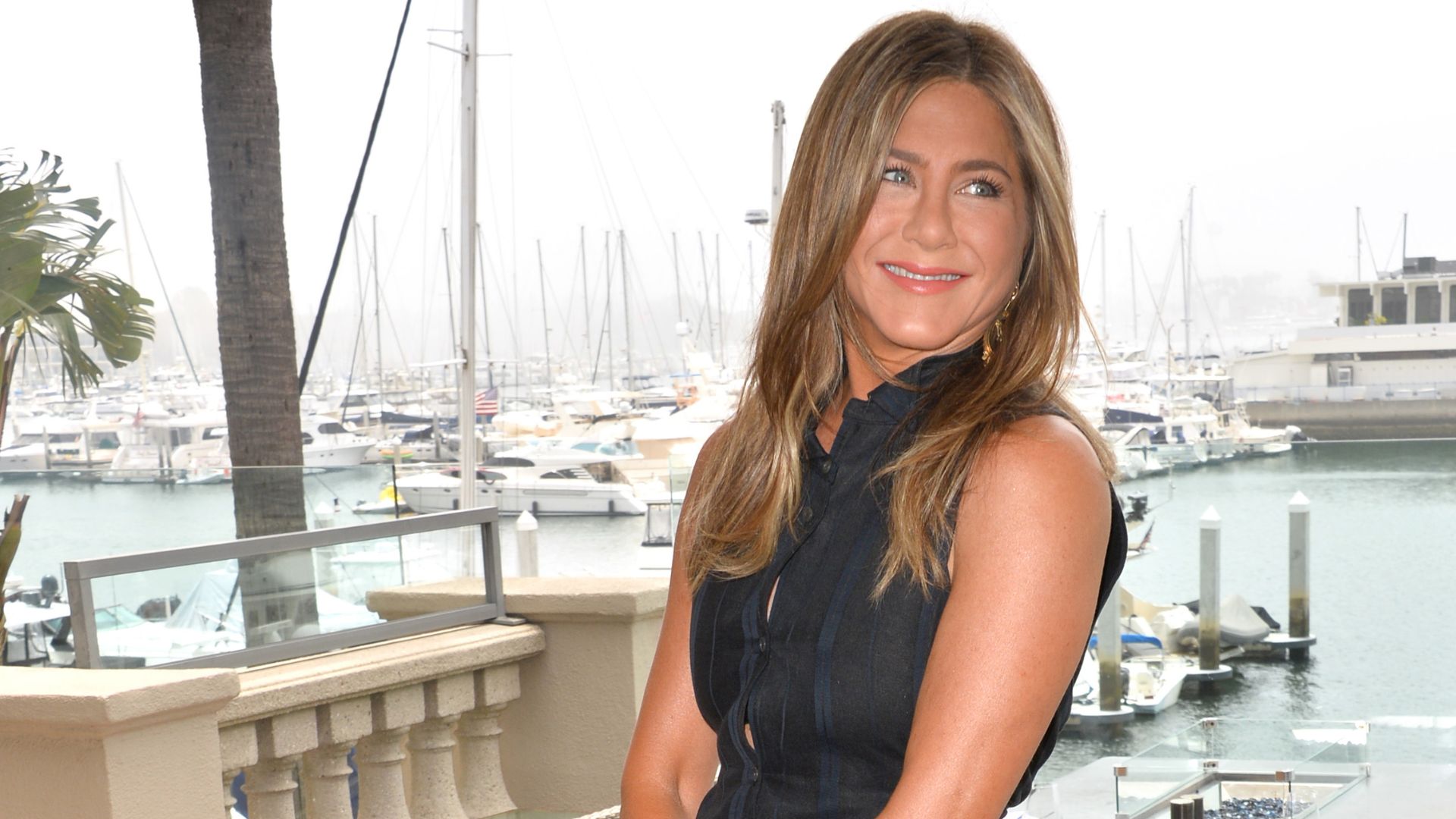 Need spring style inspiration? Jennifer Aniston proves a shirt dress is the most versatile item you can invest in
Need spring style inspiration? Jennifer Aniston proves a shirt dress is the most versatile item you can invest inIf you only buy one piece this weekend, make it a shirt dress
By Matilda Stanley Published
-
 Celebrities you never knew got their start as models, from Angelina Jolie's 'terrible' experience to A-listers who started as pageant queens
Celebrities you never knew got their start as models, from Angelina Jolie's 'terrible' experience to A-listers who started as pageant queensWhether it was just for a short time or it's how they got discovered for something else, these stars owe it all to striking a pose
By Jack Slater Published